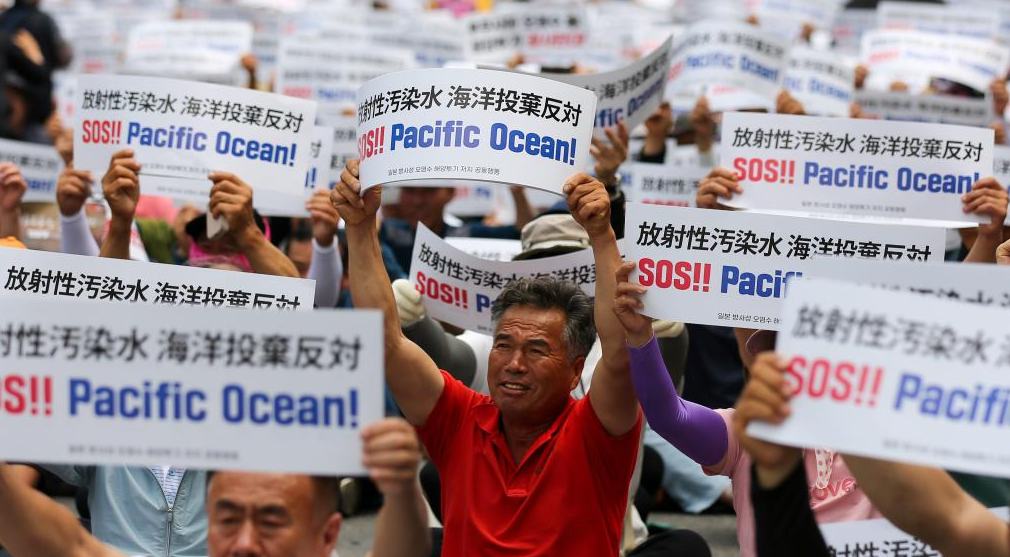RCEP injects dynamism into China's foreign trade industry
(ECNS) -- Official data shows that from January to April this year, the total import and export volume between China and members of the Regional Comprehensive Economic Partnership (RCEP) hit 4.12 trillion yuan (about $576.06 billion), up 7.3 percent year on year, accounting for 30.9 percent of China's total foreign trade import and export volume.
The RCEP agreement was signed on Nov. 15, 2020 among its 15 participating countries including China, Australia, Japan, South Korea, New Zealand, and 10 ASEAN countries, and entered into force on Jan. 1, 2022.
Xu Lina, a spokesperson for Chinese supermarket brand Wumart, said as the RCEP is fully implemented, the prices of imported goods purchased by Wumart in RCEP member countries are expected to be cheaper and customs clearance further shortened.
Imported goods from RCEP countries in Wumart supermarkets include New Zealand milk, Malaysian snacks, facial cleanser from South Korea, and Thai durian.
From January to May this year, Shanghai Customs issued a total of 34,300 RCEP certificates of origin with a value of 11.772 billion yuan (about $1.64 billion).
Shanghai Sunho Aluminium Foil Co., Ltd., an enterprise benefiting from the RCEP, can produce 83,000 metric tons of high-end ultra-thin double-zero aluminum foil annually, of which about 70 percent are for export, widely used in the packaging of food, beverages and medicine.
"We applied 1,058 RCEP certificates of origin with a total value of $67 million last year. After the full implementation of the RCEP this year, our products will be more quickly exported to RCEP countries with lower prices,” said Mei Xiaojun, head of the company’s foreign trade department.
With the certificate of origin, enterprises can enjoy tariff reductions equivalent to five percent of the commodity value, which has lowered export costs and helped gain more overseas orders, Mei added.
In order to ensure that foreign trade enterprises can benefit from the RCEP agreement and work more efficiently, China Customs has established a targeted service system, optimizing customs clearance procedures and reducing related costs to help enterprises expand the RCEP market.
For example, Qingdao Customsin Shandong Province customizes plans for import and export enterprises to ensure they can benefit more from the RCEP agreement.
"After the RCEP came into effect, Qingdao Customs found that we didn't enjoy enough preferential treatment through data analysis, so it formulated a plan to help us apply for tariff concessions from RCEP countries,” said Wang Jiashun, who is in charge of international business at a food company in Qingdao.
It is estimated that this year, raw materials like pineapple and pineapple juice imported from ASEAN countries will increase by more than 15 percent year on year, while foreign exports are expected to increase by 10 to 15 percent, Wang added.
Meanwhile, customs also explained the RCEP tariff policies to help enterprises optimize their export layout while some even promoted self-service printing and intelligent verification of certificates of origin to help enterprises reduce costs.
Data shows that in the first five months of this year, ASEAN was China's largest trading partner, and the total trade value between the two sides reached 2.59 trillion yuan, up 9.9 percent year on year, which has highlighted the dynamism brought to foreign trade by the RCEP.
Liu Yu, who works for Alibaba International Station, said in May this year, customer exports via the platform to RCEP member countries increased rapidly year on year. Among them, exports to Australia, Japan and the Philippines increased by more than 15 percent year on year, and to Singapore by nearly 30 percent year on year.
In addition to increased export destinations, the RCEP has deepened cooperation between Chinese and foreign companies.
For example, the production workshops of Nanning Qiaohong New Materials Co., Ltd have been busy since the beginning of this year due to increasing export orders, with the operating rate remaining at over 90 percent.
“Nanning Customs told us that tariffs on our dust-free paper can be cancelled from the previous 15 percent when entering the Philippine market due to the RCEP agreement,” said Lu Qi, deputy general manager of the company.
The RCEP has also promoted the deep integration of the regional industrial chain supply chain, said Lu, adding that the company can carry out more in-depth cooperation with its partners within this chain.
Photos
Related Stories
- RCEP injects strong momentum into regional economic integration
- RCEP boosts confidence in trade, regional cooperation
- Interview: RCEP in full swing to boost regional economic integration, says Japanese expert
- Countries trade at full throttle as world's largest trade pact comes in full force
- RCEP pact's full implementation to benefit Asia-Pacific economies
- RCEP pact begins new full-force implementation
- World's biggest trade deal takes effect for all members, boosting regional economic integration
- RCEP trade deal to enter into force for Philippines
- RCEP agreement in effect for all 15 members
- RCEP boosts durian's popularity in Chinese market
Copyright © 2023 People's Daily Online. All Rights Reserved.









